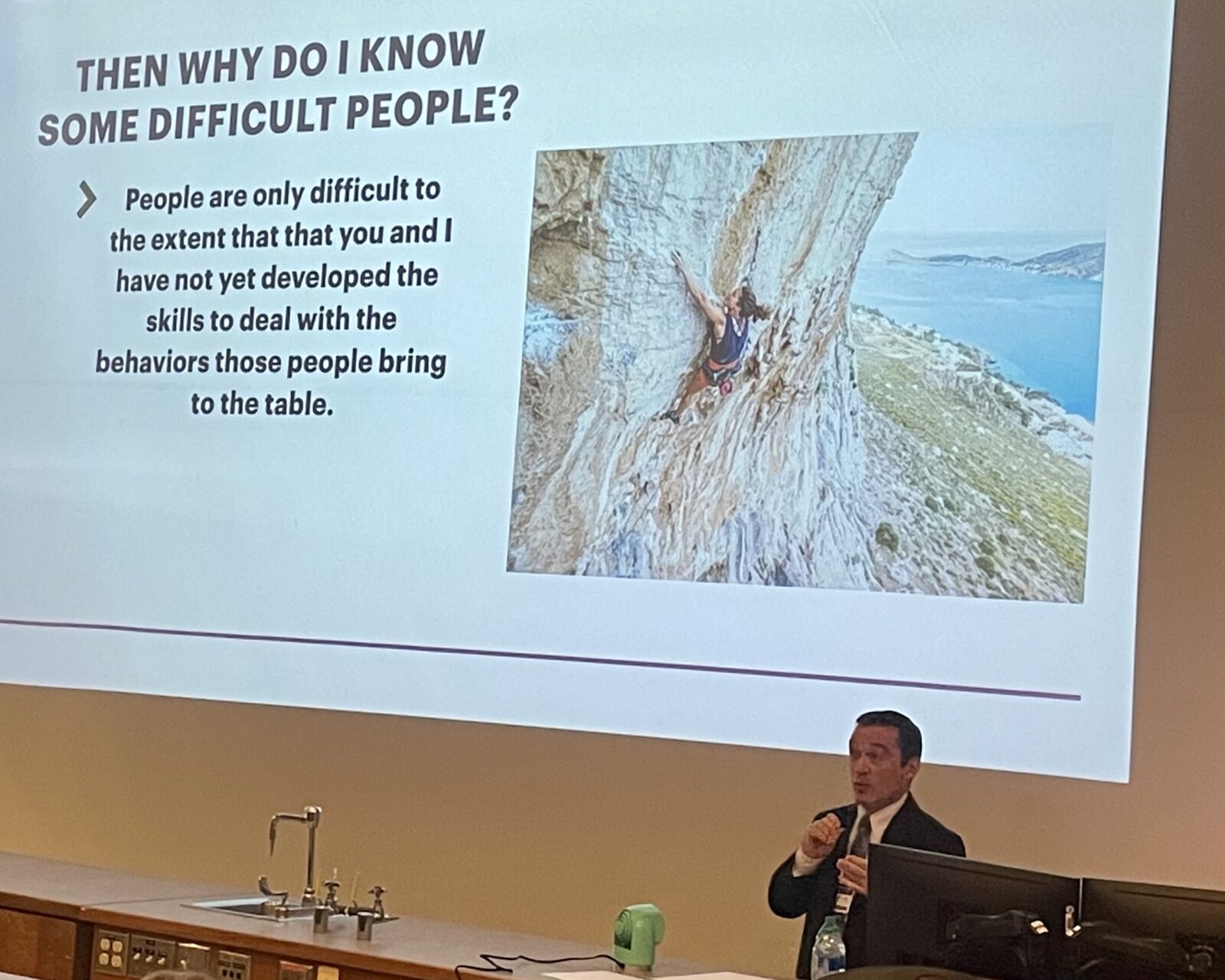
Steven Eastmond, a licensed clinical social worker, offered insights on managing emotions when life is difficult as part of his Education Week presentation on Thursday.
Eastmond began his address by asking the question “What is a difficult person?” He immediately answered his own question by saying, “There is no such thing as a difficult person.”
“People are only difficult to the extent that you and I have not yet developed the skills to deal with the behaviors those people bring to the table,” Eastmond said. “We just don’t know how to handle them yet.”
Eastmond organized his presentation in five main points to teach how to deal with difficult people.
Always consider behaviors from a matter of perspective.
“People that you consider to be difficult will see things different than you do,” Eastmond said. “Part of the challenge is learning how to shift a perspective, or at least accept one.”
He first pointed out how individuals must meet people where they are. He gave an example of someone who illustrates this point perfectly. “Jesus came to us. He didn’t just tell us to come where He is.”
“You don’t have to agree with these people,” Eastmond added, “it’s just a matter of trying to see things how they do.”
Eastmond also described the importance of not judging others. He told the audience to ask themselves, “What’s their secret?” when dealing with someone different than them.
According to Eastmond, perspective is a point of view based on life experiences, personality differences and gender differences. Someone could be grappling with chronic illness, have family of origin issues, or struggle with socioeconomic status. It is essential for individuals to recognize these differences in order to best understand and deal with others.
In context of other’s perspectives, validate them
“Validation is not agreeing or disagreeing,” Eastmond said. “Validation is allowing the other person to have their opinion and their emotions about the situation. Validation allows you to not take on the emotions of the other person.”
Eastmond showed several validating statements people can use to encourage effective communication with others. He emphasized the importance of making the other person feel like their emotions are heard and considered.
Set healthy boundaries
“Boundaries are needed when another person is violating your rights in some way,” Eastmond said. “Boundaries are not intended to control other people. They are intended to protect ourselves.”
“Healthy people respect boundaries,” Eastmond said. “Unhealthy people typically do not respect boundaries, and attempt to breach them.” He explained boundaries need to be maintained in order to stay effective.
Develop assertive communication skills
“Assertive communication protects your own rights without violating the rights of another person,” Eastmond said.
He gave examples of individuals who may be more passive, assertive or aggressive when communicating. “Asking for what you need is assertive. Being silent about your needs allows you to either be taken advantage of or to simply not allow a responsible person to help you. Ignoring the needs of others and insisting that your needs matter more is aggressive,” he said.
Develop healthy conflict resolution skills
Eastmond described this point with a four step process: 1) ask questions, 2) validate, 3) ask permission to explain your perspective and 4) explain your perspective. He said that with this process, both parties can feel understood and can be able to come to a resolution together.




